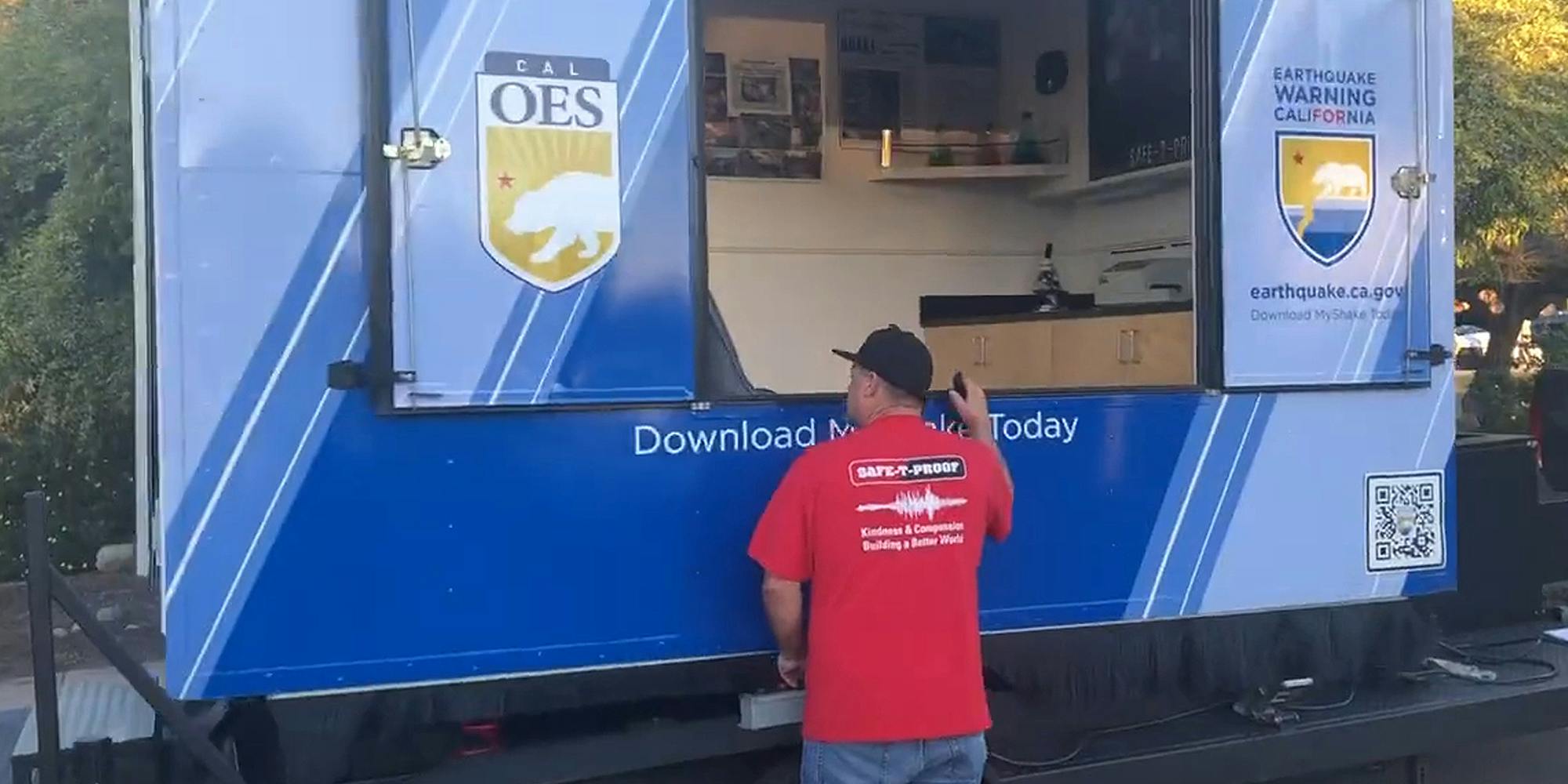California’s early-warning earthquake app has lackluster download stats—despite spending $300,000 on statewide simulator tour

Last month, a 5.1-magnitude earthquake hit Los Angeles, shocking people as it came while a hurricane approached. It was the strongest earthquake to hit L.A. since 2014.
Andrew McCalip, a mechanical engineer living in L.A. with over 70,000 followers, tweeted about feeling the impacts of the earthquake.
“Woah! That was the biggest earthquake I've ever felt in my 2 years in LA,” McCalip said “Stuff fell off the walls.”
The earthquake also hit in the midst of California’s first tropical storm in 84 years, leading #hurriquake to trend on X.
But there might have been a way for its arrival to have been less surprising.
California has an official app for earthquake preparedness, called MyShakeApp. The app was launched by researchers at UC Berkeley in 2019 and has over 1.6 million downloads, recording more than 1,100 earthquakes.
The app uses your phone to monitor for earthquakes and promises faster early warning notifications when one is about to hit.
“Our goal is to build a worldwide earthquake early warning network so that communities can reduce the impact of earthquakes,” the app’s website says.
However, according to the minutes of a November 2022 Earthquake Early Warning Advisory meeting, California Office of Emergency Services (Cal OES) Chief Deputy Director Christina Curry said that the 1.6 million number, though lofty, fell well short of the goal of getting 4 million downloads.
The app’s failure to reach a wide audience in the 40-million-person state came despite a nearly $300,000 earthquake simulator tour to raise awareness of the app.
The tour spend, which dates back to May of last year was contracted out to a Sacramento-based PR firm.
The four-seater simulator, which is set up at colleges, county fairs, and other local events, can simulate earthquakes from magnitudes of 3.0 to 7.0 for four riders. The simulator also went on a six-stop tour in October.
“California is no stranger to natural disasters, like earthquakes. That’s why it’s important Californians have the life-saving information they need to be prepared before the next seismic event,” said Cal OES Director Mark Ghilarducci in a press release announcing a tour of the simulator.
The simulator tour also encouraged attendees to download the MyShakeApp, according to a tweet from Cal OES on Oct. 19.
“Another great turnout today on the fifth stop of our six-city statewide tour encouraging all Californians to Drop, Cover and Hold On and the importance of earthquake preparedness,” the tweet said. “Download the @MyShakeApp and visit http://earthquake.ca.gov for more tips.”
The simulator appeared at locations including Inglewood, Monterey Park, Pomona, UC Berkeley, UCLA, and at Humboldt County Fair.
Each appearance costs an average of over $20,000, including staff costs, equipment, and transportation.
Veronica Morley, of 23 ABC News in Bakersfield, tried the simulator on a morning show 10 months ago, appearing shocked at the strength of the simulator.
“Definitely a little crazy,” she said in the video. “It's very hard to stay seated, even just holding on right now.”
In the same video, Cal OES staffer José Lara said the point of the simulator was to encourage citizens to re-evaluate earthquake-proofing within their own lives and homes.
“What I always try to get people to visualize is: Imagine that this is your home,” he said. “What’s falling down? Is it your china cabinet? Is it frames in the walls? Keep in mind that the most safe position is to drop, cover and hold on during this intense shaking.”
At the events, Cal OES staff offered advice and resources to citizens so that they could be more prepared when an earthquake hits and encouraged them to download the MyShakeApp.
This included flyers and Cal OES merchandise, including keychains, magnets, and lanyards.
The earthquake simulator tour also put a focus on Fleet Weeks across the state.
Cal OES spent $32,400 for Los Angeles Fleet Week in May 2022, $27,666 for San Francisco Fleet Week in October 2022, and $19,860 for San Diego Fleet Week in November 2020
The simulator also traveled to the Humboldt County Fair over the summer of 2022 at a cost of $19,530. The Great Shakeout Tour, which stopped at four locations that October, cost $65,232
The overall earthquake early warning and response budget for Cal OES is $8.1 million, meaning that over 3% of the budget was spent on the simulator.
Despite that, it appears that the campaign has limited reach.
According to the minutes of the November 2022 Earthquake Early Warning Advisory meeting, Cal OES Director Mark Ghilarducci was not impressed with the reach of the app. Another board member also expressed surprise that no feedback about users benefitting from the app had been collected.
“At 1.5 million users, he (Director Ghilarducci) commented that he thought there would be a larger number in app usage considering there are 40 million people in California,” the minutes said.
However, Cal OES spokesperson Brian Ferguson defended the utility of the simulator program and tour in a comment to the Daily Dot.
“While we don't maintain specific figures on ridership, the simulator has proved to be an invaluable educational tool to help the public understand the impacts of an earthquake,” he said.
Sign up to receive the Daily Dot’s Internet Insider newsletter for urgent news from the frontline of online.
The post California’s early-warning earthquake app has lackluster download stats—despite spending $300,000 on statewide simulator tour appeared first on The Daily Dot.
dailynoti coindeskcrypto cryptonewscrypto bitcoinmymagazine mybitcoinist cryptowithpotato mycryptoslate fivenewscrypto findtechcrunch journalpayments nulltxcrypto newsbtcarea


Post a Comment